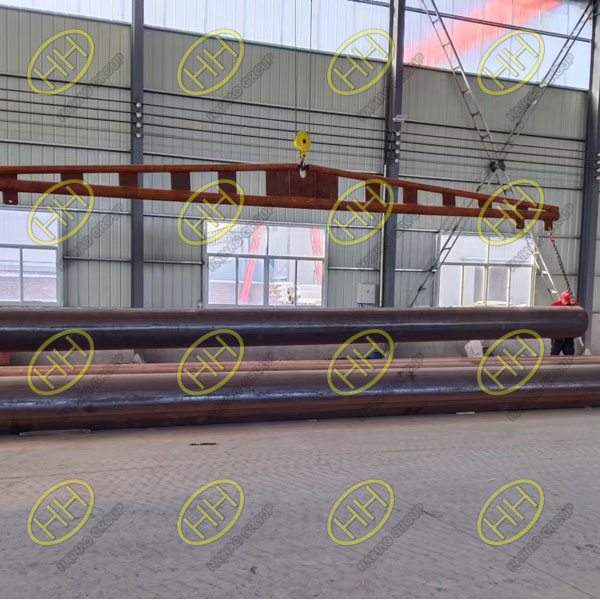Haihao Group, renowned for its expertise in the pipeline systems domain, understands the intricacies of pipeline management. Today, we shed light on the crucial process of degreasing in oxygen pipelines, emphasizing its significance in ensuring construction safety.
As commonly known, oxygen pipelines must strictly avoid oil contamination, requiring thorough degreasing. Degreasing, as the name suggests, involves the removal of oil and impurities from both the internal and external surfaces of pipe materials. This process holds paramount importance in oxygen pipeline construction, as any oil residues within the pipeline can react dangerously with pure oxygen, posing a severe explosion risk.

steel pipes
Oxygen pipelines typically utilize seamless steel pipes, often made from materials such as 20# steel or stainless steel. For stainless steel pipelines, degreasing treatment is sufficient. However, for pipelines made of 20# steel, degreasing is accompanied by acid washing, neutralization, and passivation processes. During construction, it is crucial to promptly seal the degreased pipe openings to prevent secondary contamination. Before delivery and use, a thorough cleaning with oil-free compressed air is imperative.
Degreasing, Acid Washing, and Passivation of Carbon Steel Pipes:
For carbon steel pipes, degreasing precedes acid washing. Since grease is insoluble in acid solutions, acid washing alone would not effectively remove the oil contamination or the corrosion under the oil layer. The immersion method in tanks is commonly used for degreasing and acid washing during construction. The process involves four tanks for degreasing, acid washing, neutralization, and passivation.
Degreasing:
Degreasing solution formula: Per liter of solution contains 20g–30g of sodium hydroxide, 35g–50g of sodium nitrate, and 3g–5g of sodium silicate.
Operating requirements: Liquid temperature of 70°C–80°C, immersion time determined by a test method based on the oil contamination level (typically around 10–40 minutes).
Inspection methods: Various methods including wiping with clean dry white filter paper, camphor checking of steam-blown condensate, and UV inspection to ensure no oil traces.
Water Rinsing:
Clean with pressurized water at 0.8MPa.
Acid Washing:
Acid washing removes oxide scales and rust from the surface using sulfuric acid or hydrochloric acid.
For sulfuric acid, the concentration is 5%–10%, and the process involves immersion at 60°C–80°C for 5–20 minutes.
For hydrochloric acid, the concentration is 5%–20%, and the process involves immersion at 20°C–50°C for 5–20 minutes.
Inspection: Surface should be free from rust after acid washing.
Water Rinsing:
Clean with pressurized water at 0.8MPa.
Neutralization:
Neutralization solution formula: Dilute ammonia solution to achieve a pH of 10–11.
Operating requirements: Immersion at room temperature for 3 minutes.
Passivation:
Passivation solution formula: Sodium nitrite concentration of 8%–10% and ammonia concentration of 2%.
Operating requirements: Immersion at room temperature for 10 minutes.
Water Rinsing:
Clean with pressurized water at 0.8MPa.
Drying:
Dry with clean, oil-free compressed air or nitrogen.
Inspection:
Wipe with white filter paper to ensure no oil traces, and seal the pipe ends with plastic sheets and tape after passing inspection.
By adhering to these methods, carbon steel pipes exhibit a clean and bright inner surface, maintaining corrosion resistance for approximately two months or longer with proper storage. The same methods can be applied to carbon steel fittings. At Haihao Group, we prioritize the safety and quality of our pipeline systems, ensuring they meet the highest standards in the industry.







